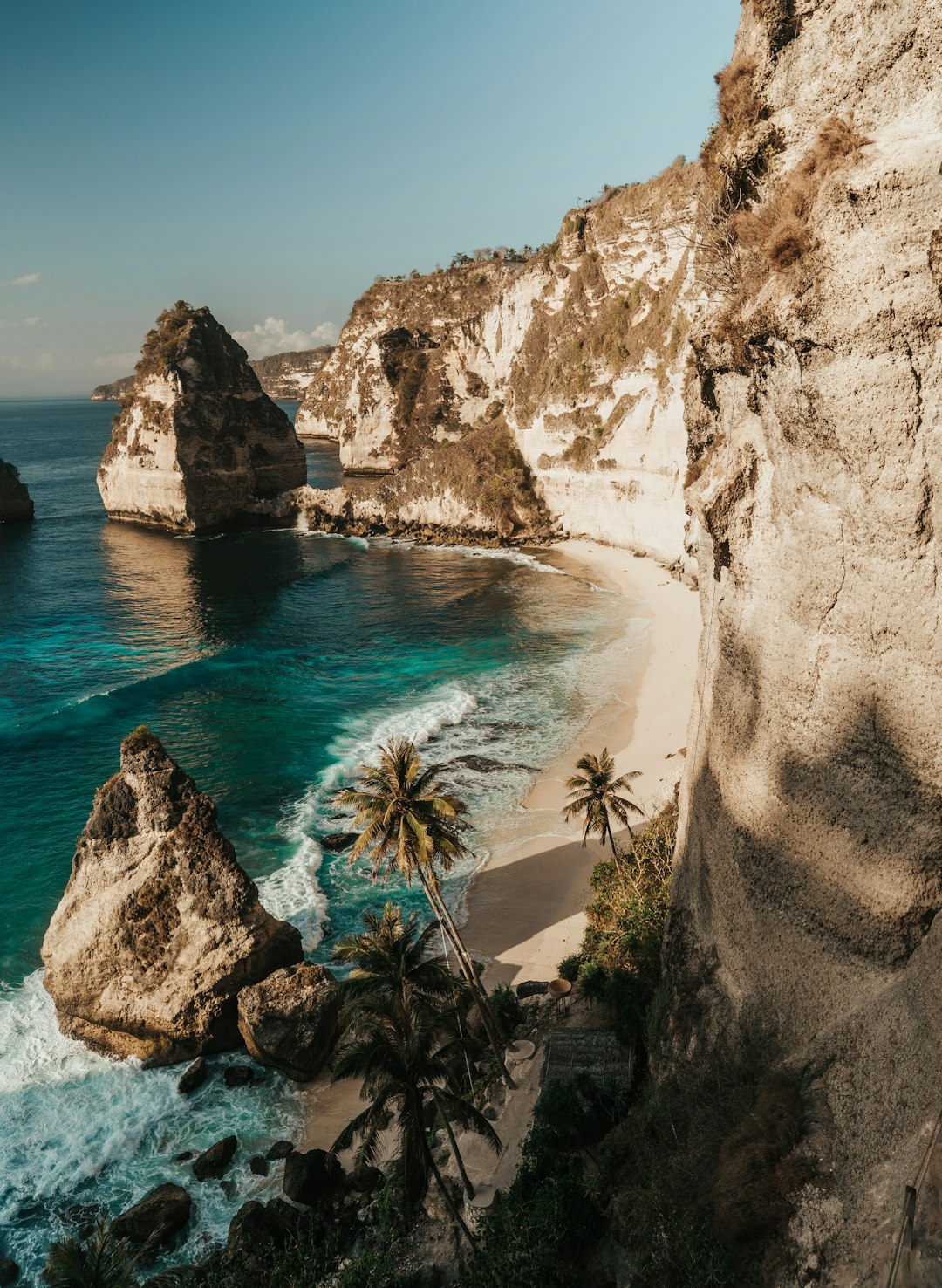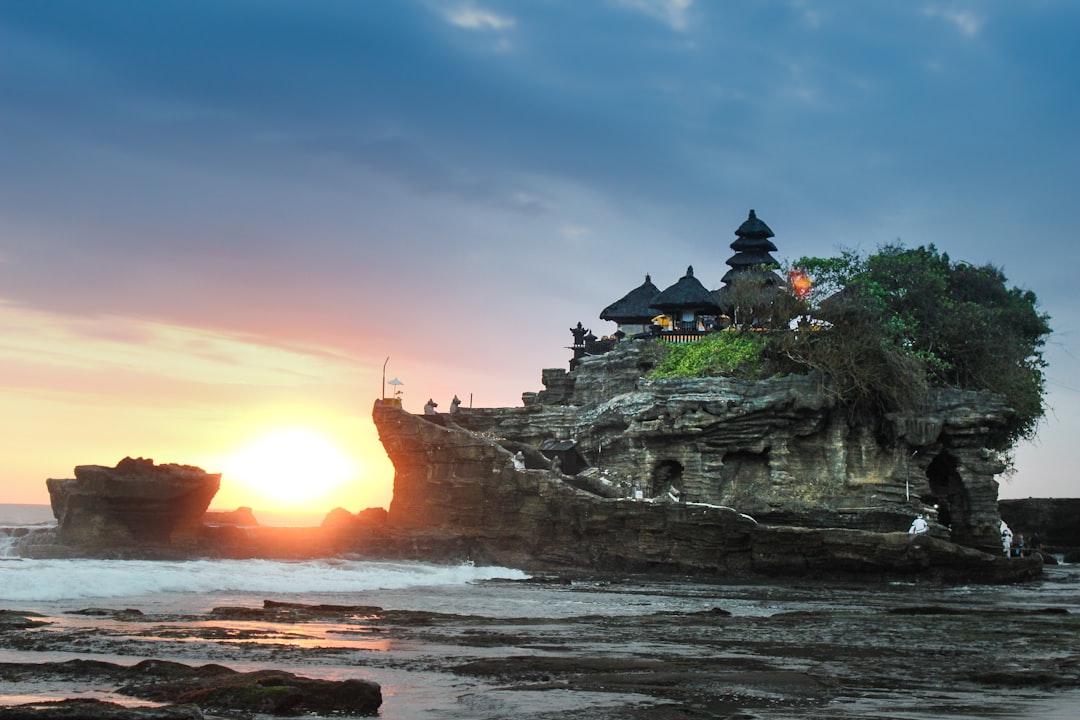
Embarking on a journey to the fabled island of Bali promises an array of enchanting experiences, and having a comprehensive Bali travel guide is the key to unlocking this tropical paradise. From the ideal moments to wander its picturesque shores to tips on traversing its lush landscape, this definitive guide aims to equip you with all the insider knowledge for an adventure that’s as seamless as it is memorable. Whether you’re keen to explore ancient temples, indulge in the rich local cuisine, or seek out hidden corners of serenity, Bali’s diverse allure beckons every kind of traveler. So prepare to immerse yourself in all the magic that Bali has to offer, with secrets and wisdom at your fingertips for an unforgettable island escapade.
Unveiling the Magic of Bali: Best Times to Visit
The extraordinary beauty of Bali beckons travelers throughout the year, but knowing the best times to visit can greatly enhance your adventure. Your Bali travel guide wouldn’t be complete without a breakdown of the island’s seasons and what they offer.
High Season (July – August, Late December – Early January)
- Pros:
- Vibrant festivals
- Ideal conditions for water sports
- Cons:
- Crowded attractions
- Higher accommodation rates
During the high season, you’ll find that the island buzzes with energy. These periods coincide with European and Australian school holidays, making sights more crowded. However, if you’re looking to experience Bali’s festivities at their peak, this is the time to go.
Shoulder Season (April – June, September)
- Pros:
- Less crowded beaches
- More affordable accommodation
- Cons:
- Occasional rainfall
- Some businesses may still operate on high-season pricing
Many argue that the shoulder season offers the best balance for a Bali visit. The weather is usually quite pleasing, with a mix of sun and moderate rainfall, providing lush, green landscapes and comfortable temperatures.
Low Season (October – March)
- Pros:
- Lower prices all around
- Peaceful, less-touristed areas
- Cons:
- Heavier rainfall
- Higher humidity
If you are averse to crowds and looking for better deals, the low season might be your ideal time. While you may have to contend with the rainy season, it’s typically characterized by short, torrential downpours followed by clear skies, rather than all-day drizzle.
When planning your trip, consider not only Bali’s weather but also your preferences for festivities, budget, and tolerance for fellow tourists. This Bali travel guide serves as a starting point to plan an itinerary that aligns with your ideal vacation vision, ensuring an unforgettable island escapade.

Navigating the Island: Tips for Getting Around Bali
Bali, an island paradise that draws travelers from all over the globe, presents various transportation options to navigate its picturesque landscapes. As a crucial element of any Bali travel guide, understanding how to get around efficiently can transform a good vacation into an amazing adventure.
When considering transportation in Bali, here are some essential tips:
- Rent a Scooter: For the more adventurous, renting a scooter is the most common and flexible way to explore Bali. It allows you to weave through traffic and reach places that are off-limits to larger vehicles.
- Hiring a Driver: If you prefer comfort, hiring a private driver is an excellent choice. Drivers can offer a wealth of local knowledge and it’s a safer option for those unfamiliar with Bali’s roads.
- Use Ride-Hailing Apps: Apps like GoJek or Grab are popular in Bali. They are reliable and often more affordable than traditional taxis. You can also use them to order food and deliver it to your location.
- Public Transport: Although not as widespread, public transport like ‘bemos’ (mini-vans) or buses can be experienced for longer journeys across the island.
Kura-Kura Bus – A Safe and Comfortable Choice
For those who prefer to stick with public transit options, the Kura-Kura Bus is targeted towards tourists, offering routes that cover major attractions.
| Transportation Method | Cost | Flexibility | Convenience |
|---|---|---|---|
| Renting a Scooter | Low | High | Medium |
| Hiring a Driver | Moderate-High | Medium | High |
| Ride-Hailing Apps | Low | High | High |
| Public Transport | Very Low | Low | Low |
| Kura-Kura Bus | Low | Medium | Medium |
Keep in mind, no matter your method, traffic in Bali can be unpredictable, and navigating can be challenging for newcomers. Always factor in extra time when planning journeys to account for possible delays.
Finally, an essential tip in any Bali travel guide is to always respect local traffic laws and customs. Use helmets when riding scooters, negotiate prices upfront, and ensure you’re insured for any mode of transport you choose.
By using these tips and local insights, you’ll be better equipped to enjoy the dances of Bali’s roads and streets, making your stay seamless and truly unforgettable.
Top Bali Attractions You Cannot Miss
When creating your itinerary, a comprehensive Bali travel guide would not be complete without highlighting the island’s top attractions. Bali is a mosaic of cultural landmarks, scenic landscapes, and vibrant social scenes. To help you navigate, here are the quintessential destinations that should find a place on your travel list:
- Pura Tanah Lot: This iconic sea temple is one of the most photographed in Bali. Situated on a rock formation off the coast, it’s best visited during sunset for an absolutely stunning view.
- Ubud Monkey Forest: A natural sanctuary in Ubud, home to hundreds of playful long-tailed macaques. Wander through the leafy trails and ancient temples, but remember to secure your belongings!
- Mount Batur: Calling all adventurers! An early morning hike up this active volcano rewards you with breathtaking sunrise panoramas over Bali.
- Tegallalang Rice Terraces: Featuring the subak (traditional Balinese cooperative irrigation system), these terraces offer some of the most iconic landscapes in Bali. They exemplify the harmonious relationship between humans and nature on the island.
These must-visit attractions form only the tip of the iceberg. As you delve deeper into this Bali travel guide, prioritize these sites for an assuredly memorable experience. Be sure to allocate enough time to fully immerse yourself in the beauty and uniqueness each of these places offer.
When planning visits, consider the following points for a seamless journey:
- Entrance Fees: Most attractions have an entrance fee, so keep some cash handy.
- Crowds: Aim to arrive early to beat the large tour groups, especially at popular sites like Tanah Lot or the Ubud Monkey Forest.
- Local Guides: Engage local guides for insightful stories and hidden spots often missed by tourists.
As part of your travel plans, these highlights will ensure that your Bali adventure is nothing short of extraordinary. Allow the spirit of Bali to enchant you as you explore its most revered treasures.
Discover Bali’s Hidden Gems: Off-The-Beaten-Path Adventures
Venturing beyond the tourist hotspots is a hallmark of true exploration, and this Bali travel guide wouldn’t be complete without divulging some of the island’s lesser-known treasures. Here are off-the-beaten-path adventures that promise an authentic Bali experience.
- Sidemen Valley: Tranquil and picturesque, this verdant valley offers a glimpse of rural Bali life. It’s perfect for those who appreciate serene hikes and cultural encounters.
- Sekumpul Waterfall: Arguably one of Bali’s most stunning waterfalls, it remains relatively hidden due to its location. The trek through lush jungle to reach the falls is an adventure itself.
- Amed and Jemeluk Bay: A haven for divers and snorkelers, these quiet beach towns boast vibrant coral gardens teeming with marine life, often overlooked for more famous sites.
- West Bali National Park: Explore this natural sanctuary by foot or snorkeling. You’ll get a chance to see Bali’s indigenous wildlife and untouched coral reefs.
Incorporating these destinations into your travel plans enriches your Bali adventure with a mix of tranquility, natural beauty, and cultural depth. Here’s why each is a must-do:
Sidemen Valley:
- Culture: Encounter traditional weaving practices and organic farming.
- Scenery: Enjoy undisturbed views of Mount Agung.
Sekumpul Waterfall:
- Adventure: Engage with the local guides and navigate through multiple cascades.
- Scenery: Marvel at the 80-meter high waterfall surrounded by lush rainforest.
Amed and Jemeluk Bay:
- Marine Life: Discover rare species like the sunfish and sea turtles.
- Rejuvenation: Take part in yoga retreats with a view of the sea.
West Bali National Park:
- Biodiversity: Spot the endangered Bali Starling and other wildlife.
- Isolation: Escape the crowded tourist spots for solitude in nature.
For travelers looking to thread the fabric of Bali’s diverse tapestry, these hidden gems are gleaming with unique splendor. As with all travel, respect for the environment and local customs is paramount. Remember, the heart of this Bali travel guide is to foster immersive and responsible tourism. Each off-the-beaten-path adventure not only adds to your personal catalog of memories but also supports the sustainability of Bali’s enchanting isle.

Bali’s Culinary Journey: A Taste of the Island’s Best Dishes
Bali is not just a feast for the eyes but also a paradise for food lovers. A true Bali travel guide would be incomplete without diving into the rich flavors of the island’s cuisine. Balinese food is a complex blend of spices, textures, and culinary techniques, offering an array of tastes to explore. Below are some of the must-try dishes on your culinary journey in Bali:
- Nasi Goreng: This staple dish, a flavorful fried rice often accompanied by fried egg and satay skewers, is a quintessential taste of Indonesia.
- Bebek Betutu: A ceremonious dish, this slow-cooked duck is marinated with local herbs and spices, wrapped in banana leaves, and traditionally cooked in an earth oven for hours.
- Ikan Bakar: Grilled seafood is a Bali favorite; Ikan Bakar is fish marinated in a blend of spices, then grilled to perfection, typically served with rice and sambal (spicy sauce).
- Sate Lilit: Unlike typical satay, Sate Lilit is made from minced meat, coconut, and a mixture of aromatic spices, wound around bamboo sticks and grilled.
Additionally, any Bali travel guide should highlight the island’s vibrant street food scene. From bustling night markets to roadside stalls, the thrill of discovering the flavors of satay, sweet treats like dadar gulung (green pancake rolls with coconut and palm sugar), and the savory goodness of martabak (stuffed pan-fried bread) is undeniable.
Don’t forget to wash it all down with a cup of Kopi Luwak, perhaps the most famous Balinese coffee, or a refreshing Arak, a traditional Balinese spirit.
Remember, the key to fully enjoying Bali’s culinary delights is to keep an open mind and a curious palate. Every dish tells a story of the island’s culture, history, and traditions. Enjoy your culinary exploration as a vital part of your Bali travel guide to the island’s soul.
Embracing the Local Culture: Do’s and Don’ts in Bali
One of the fundamental aspects of an enriching travel experience is immersing yourself in the local culture and understanding the customs of the place you are visiting. To get the most out of your island adventure, this Bali travel guide section will explore some essential do’s and don’ts to help you engage respectfully with Balinese traditions and people.
Do’s:
- Dress Modestly: Especially when visiting temples or religious sites, it is crucial to cover your shoulders and knees as a sign of respect.
- Use Your Right Hand: When giving or receiving something, always use your right hand. The left hand is considered impure in many Asian cultures.
- Ask for Permission: Before taking photos of people, their homes, or religious ceremonies, it’s polite to ask for their consent.
- Participate in Local Festivals: If you’re invited, attending local ceremonies and festivals can be a profound way to appreciate Bali’s culture.
Don’ts:
- Don’t Step on Offerings: Small offerings called ‘canang sari’ are placed everywhere in Bali. Always watch your step and avoid disturbing them.
- Don’t Touch Heads: In Balinese culture, the head is considered the most sacred body part, so it is impolite to touch someone’s head, especially children’s.
- Don’t Raise Your Voice: Balinese people value harmony and courtesy; raising your voice or showing anger is seen as very impolite.
- Don’t Enter Sacred Areas: Certain areas in temples are restricted to worshipers only. Pay attention to signs and barriers.
By adhering to these guidelines, your visit to Bali will not only be unforgettable but also culturally respectful. This enables you to create meaningful connections and memories, enhancing your understanding of this unique island, as directed by this comprehensive Bali travel guide. Remember, when in doubt, it’s always best to observe what locals do and follow their lead!
Where to Stay in Bali: Accommodation for Every Budget
Finding the perfect place to stay in Bali can significantly influence your holiday experience. Luckily, this island has an array of choices to cater to all preferences and wallets, providing a comfortable base for your adventures. Regardless of whether you are a budget backpacker or in search of luxury, this Bali travel guide section will help highlight the best accommodation options for every budget.
Luxury: For those willing to indulge, Bali’s luxury resorts are a pinnacle of opulence. Often located in breathtaking spots, you can expect private villas with pools, on-site spa facilities, and top-notch dining experiences.
Mid-Range: Mid-tier hotels offer comfort without breaking the bank. These establishments typically include amenities like swimming pools, air-conditioned rooms, and in-house restaurants. Many are conveniently situated near major tourist spots, offering a pleasant blend of convenience and quality.
Budget: Budget travelers need not sacrifice comfort, as hostels and guesthouses in Bali provide clean and friendly environments that are perfect for meeting fellow travelers. They come with basic amenities and often offer community activities.
Homestays: Immersing in Balinese culture doesn’t get more authentic than staying with a local family in a homestay. It’s not only affordable but also a chance to experience genuine hospitality and traditional living.
Here’s a comparison to help you decide:
| Accommodation Type | Price Range (per night) | Ideal For |
|---|---|---|
| Luxury Resorts | $$$ | Honeymooners, Luxury Travelers |
| Mid-Range Hotels | $$ | Couples, Families, Solo Travelers |
| Budget Hostels | $ | Backpackers, Solo Travelers |
| Homestays | $ | Culture Enthusiasts, Budget Travelers |
Remember, your selection should align with both your financial constraints and the type of experience you are after. Regardless of choice, each option contributes to the immersive journey that this Bali travel guide aims to offer. Whether it’s waking up to a seaside view or enjoying the humble comforts of a Balinese home, the island’s offerings are as diverse as the visitors it welcomes.

Sustainable Tourism: How to Travel Responsibly in Bali
Traveling responsibly in Bali is not just a choice; it’s a commitment to preserving the natural beauty and cultural integrity of this unique island. The implementation of sustainable practices is pivotal for protecting Bali’s environment and supporting local communities. A smart Bali travel guide will always emphasize sustainable tourism, ensuring that the splendor of the island continues to enchant visitors for generations to come.
Here are several actionable tips for responsible travel in Bali:
- Choose Eco-friendly Accommodations: Opt for hotels and resorts that have a proven commitment to sustainability. They should utilize renewable energy, have waste reduction programs, and support local conservation efforts.
- Support Local Businesses: When you buy souvenirs or dine out, choose local artisans and eateries. This injects money directly into the community, fostering economic growth.
- Be Mindful of Water Usage: Water scarcity is a critical issue in many parts of Bali. Save water by taking shorter showers and turning off the tap when brushing your teeth.
- Reduce Plastic Consumption: Bali has a significant issue with plastic waste. Play your part by using reusable bags, bottles, and straws instead of single-use plastics, helping to keep Bali’s beaches and oceans clean.
- Respect Wildlife and Natural Habitats: Avoid interacting with wildlife in unnatural ways and refrain from contributing to activities that harm animals or their ecosystems.
- Learn about Local Traditions: A good Bali travel guide will teach you about local customs and traditions. Respect cultural norms and participate in local practices responsibly.
- Use Transportation Wisely: Reduce your carbon footprint by choosing to walk, bike, or use public transportation instead of hiring private vehicles whenever possible.
To truly embrace responsible travel, visitors to Bali should take these tips to heart within their Bali travel guide strategies. Embracing conscientious travel practices maintains Bali as an idyllic destination now and preserves it for the adventures of tomorrow.
Essential Bali Packing List: What to Bring for Your Island Getaway
Embarking on a journey to Bali requires thoughtful packing to ensure you have everything you need for your tropical escapade. Whether you’re surfing the waves or exploring ancient temples, this essential Bali packing list, as part of your comprehensive Bali travel guide, will help you come prepared.
- Climate-Appropriate Clothing: Given Bali’s tropical climate, light and breathable fabrics are a must. Include:
- T-shirts and tank tops
- Shorts and comfortable skirts
- Sundresses and sarongs
- Swimwear for those beach days
- A light jacket or sweater for cooler evenings
- Footwear: You’ll be walking on varying terrains, so pack accordingly:
- Comfortable sandals for the beach
- Walking shoes or sneakers for exploring
- Water shoes if you plan on engaging in water activities
- Sun Protection: The Balinese sun is intense. Don’t forget:
- High SPF sunscreen
- A wide-brimmed hat
- UV-blocking sunglasses
- Health Essentials: To keep your health in check:
- Personal medications and prescriptions
- Insect repellent to ward off mosquitoes
- Basic first-aid kit for minor injuries
In addition, every seasoned traveller’s Bali travel guide will remind you not to overlook these crucial items:
- Reusable Water Bottle: Bali’s heat demands hydration, plus, you’ll be doing your part for the environment.
- Power Adapter: Indonesia uses power sockets and plugs (Type C and F), so a universal travel adapter is a great asset.
- Waterproof Bag: Protect your valuables during water-based activities or sudden tropical downpours.
When it comes to electronics, less is more, but make sure to bring:
- A smartphone or camera to capture Bali’s breathtaking scenery
- Backup batteries or portable chargers to keep your devices powered up
Lastly, an often-overlooked yet vital inclusion to any Bali travel guide packing list:
- Respect for Local Customs: Pack an open mind and a respectful attitude towards Bali’s culture and traditions.
With this curated list, you’re set to jet off to your Balinese adventure. Enjoy the journey with peace of mind, knowing you’ve packed smart for the trip of a lifetime!



